Dear readers, With the launch of e-newsletter CUHK in Focus, CUHKUPDates has retired and this site will no longer be updated. To stay abreast of the University’s latest news, please go to https://focus.cuhk.edu.hk. Thank you.
A Midwife of the Soul
Yvonne Leung reading cards reading minds

In the upstairs reading room of Mount Zero Books, Yvonne Leung is giving me undivided attention. It is a windy late October morning. The tarot reader and cultural studies scholar is sitting upright on the student chair, the hem of her loose navy-blue shirt dress sprawling over the chair. What I see is a placid and receptive high priestess, as featured in the major arcana (‘greater secrets’) of tarot, a 22-card set out of a deck of 78 that portrays the archetypal human journey.
The English alumna of New Asia College of 1996 was born a sensitive literary soul. Back in her undergraduate days, she often skipped classes, preferring to spend the best part of the day reading philosophy and mysticism works, one after another. The arcane writings evoked in the arts student a sense of déjà vu, which to her carried finer grains of truth than those that could be found in traditional disciplines. The 1990s saw the heyday of literary and cultural theory on campus; many late nights, she attended screenings of European arthouse films with fellow arts lovers on the University Mall. The sense of fatefulness in Krzysztof Kieslowski’s Dekalog struck a chord in her: the profound, ineffable world where destiny and mysterious forces play out is the spiritual homeland she had long sought to comprehend and return to. It is a fairy tale world seen through a child’s eyes, where everything is enchanted, wielding a magic of its own.
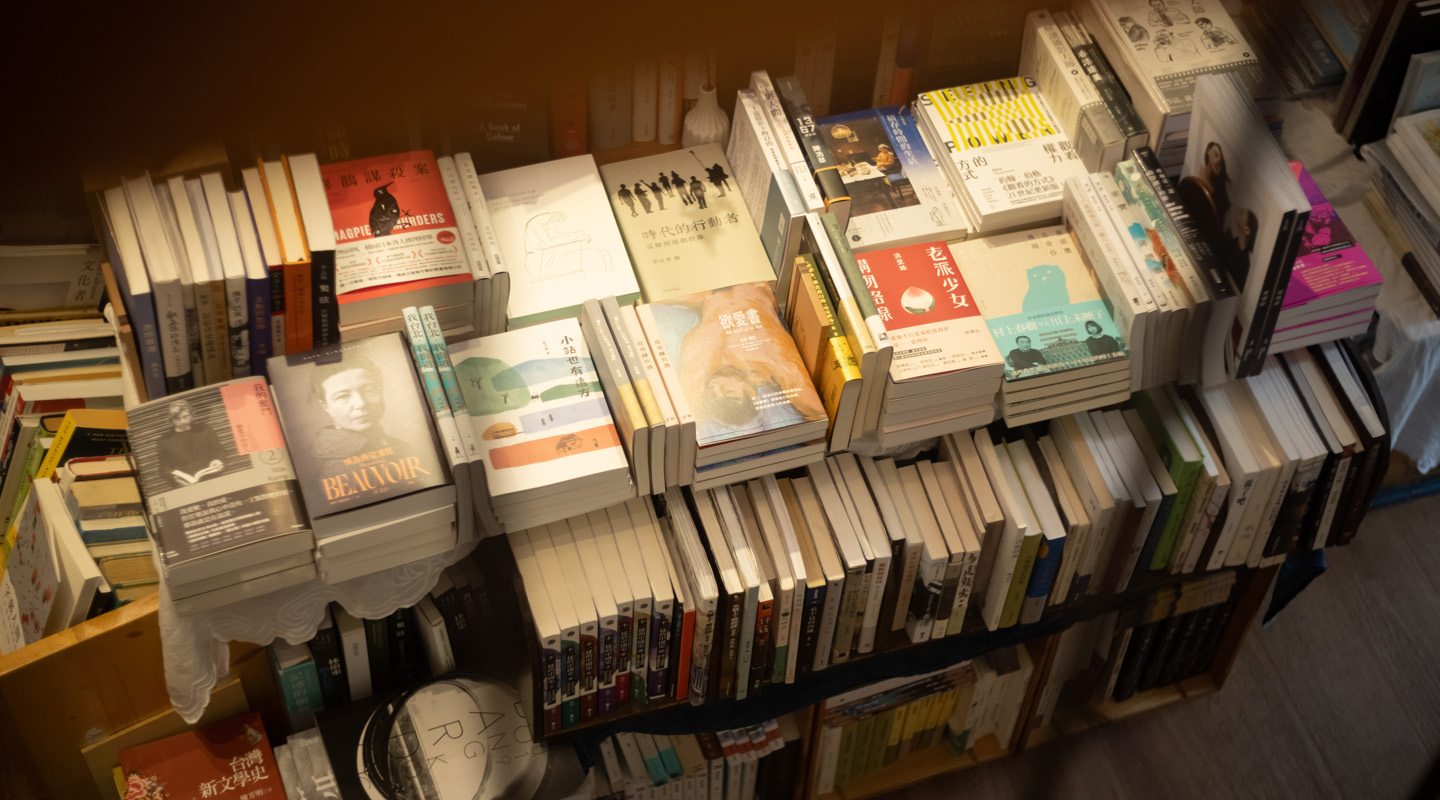
‘Just like popping in a shop: when you push the door open, there’s something inside.’ Her soothing magnetic tones echo along the wood panelling of the reading space. ‘To me, everything is energy. But it is hard to explain it to people; as is often the case, we find it easier to believe in what our eyes can see—a tangible, material world. But indeed, there is a layer here,’ she looks up, drawing a door with her hands, ‘which opens to a world of meaning.’
The Heideggerian thesis of man’s thrownness into the world, and vain search for a foundation on which meaning can be built had been a sentiment familiar to Leung since childhood. The search for meaning saw her embark on a meandering path that took her into literature, arts and cultural endeavours, and master’s and doctoral studies in social sciences. Eventually, it was not the books, but the breakup of a long-term relationship that put back in her hand the key to the long lost world of meaning. The year was 2018: Leung opened the drawer and took out the musty Russian tarot of St. Petersburg she bought in a curio shop during her travel to the US in the Year 2 summer.
‘What precisely is tarot?’ I ask.
‘I don’t want to say it’s a divination tool. I treat it as a friend who consoles you and is always here for you. Or a tool that allows you to hold dialogue with yourself.’
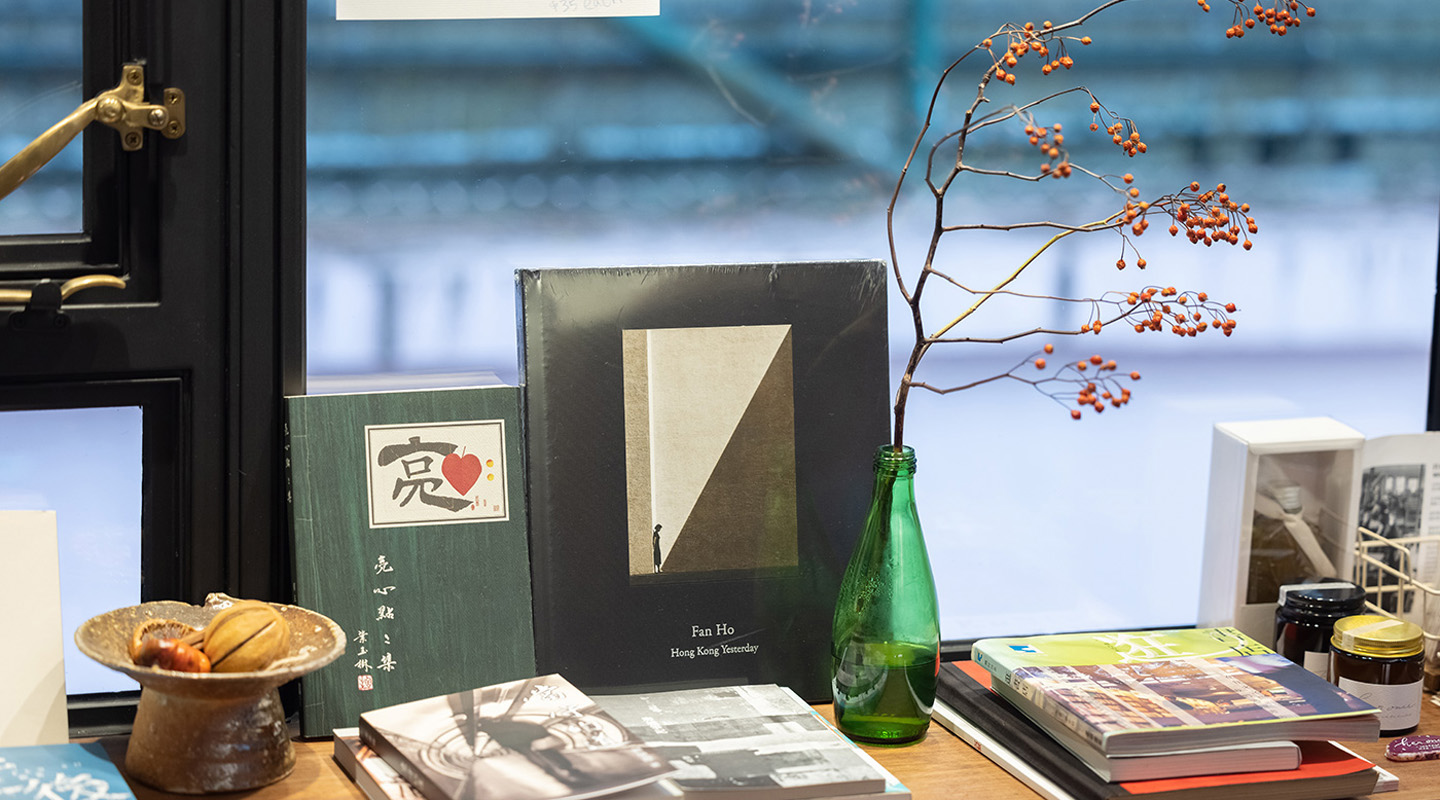
‘Where does the consolation come from?’
‘From its tuning your energies and emotions. It’s similar to listening to a song or reading a novel, during which we undergo a shift of states and emotions. It’s like someone who’s just ended a romantic relationship would keep listening to the same song over and over again until they come to a point where they could stare their own pain in the face,’ she explains. ‘It’s a process of self-transformation with ups and downs. The change is gradual, and tarot keeps you company in such a journey.’
The Two of Cups—Two Souls Sharing the Cup of Flowing Life
Originating in Europe in the mid-15th century, tarot is a western pictorial book of wisdom whose imageries and symbolisms span a constellation of knowledge and subjects including mythology, history, religion, philosophy, literature, psychology, society and culture. Reading tarot entails feeling the images, getting the meanings, fathoming the symbols, and using intellect and imagination to arrive at an interpretation. As she started, Leung watched plenty of tarot readings on YouTube to draw inspiration from various readers’ interpretive styles. She then turned to books for more nuanced understandings. In the summer of 2019, she went back to the US to study under Rachel Pollack and Mary Greer, the world’s foremost authorities on modern tarot.
From healing oneself to appeasing the troubled mind of a stranger, what Leung found most striking is that by simply pulling cards and spreads, one can cut to the innermost of another soul and at a critical moment point to a way out.
‘What moves me most is that as the spread is laid out, the souls of two strangers can get really, really close, and together they enter into a mystical aura. That we can be so close to another person and have pure, sincere exchanges really counts towards some of the most beautiful moments in life.
‘Like you were a bit shaken just now; I could feel it,’ the tarot reader’s tender voice soothes and awes. It is as sharp as it is surprising, and lands unerringly where the heart is softest.
The Hanged Man—To Change the World, Change the Metaphor
But knowing can be a far cry from healing. How can a single card make one see one’s blind spot, and eventually break one out of patterned behaviours?
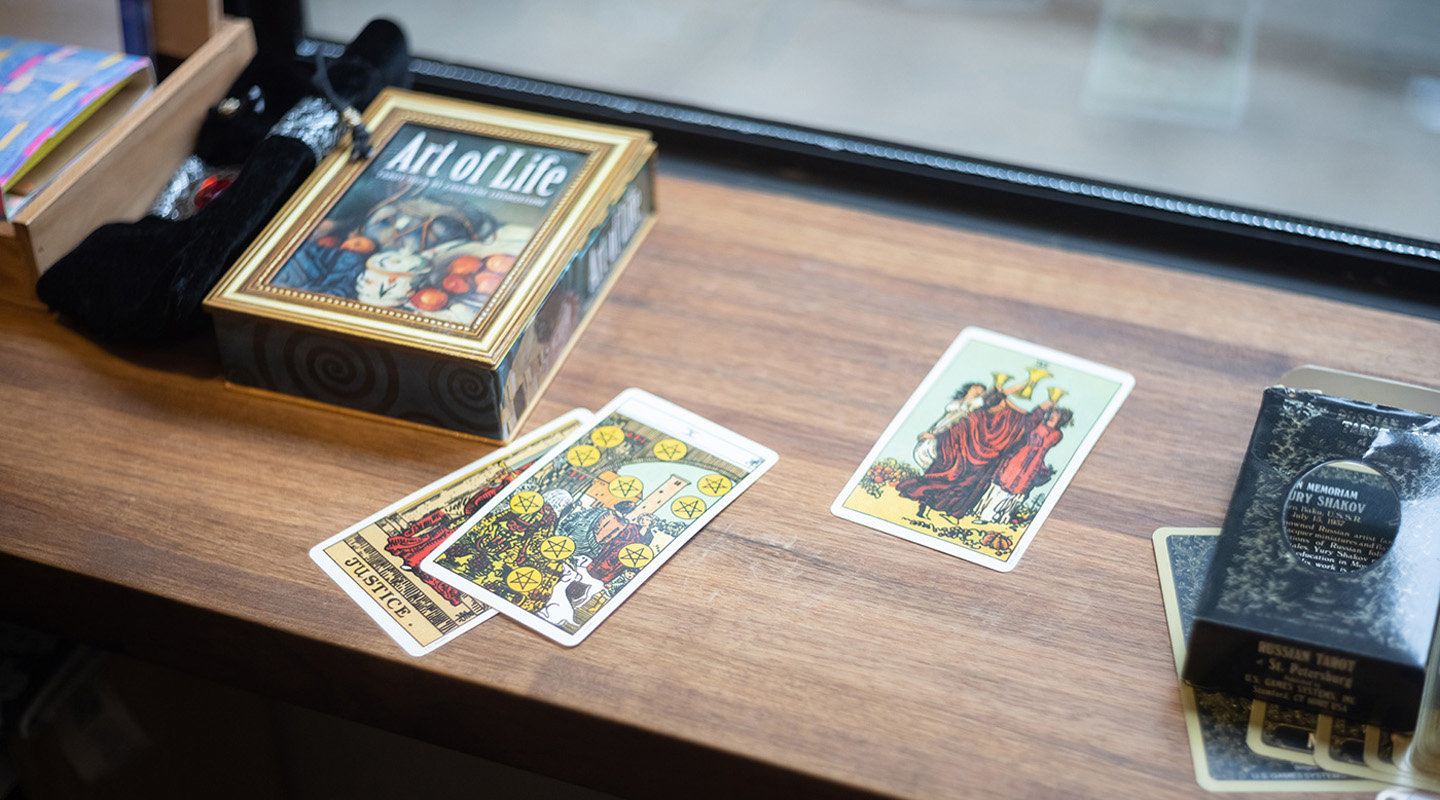
‘Through language,’ Leung says, taking out the Rider–Waite deck—the standard and most popular tarot deck to date—from the black velvet drawstring pouch. ‘Let’s say the Justice is drawn. I’d ask the client to describe the card. She may say “a man holds a sword”, “he is harsh and cold”, etc. I would then invite her to change the subject into “I”, to say “I hold a sword”, “I am harsh and cold”. Language is extremely powerful; the switch of subject brings about a shift in perspective. Repressed traumas and feelings will come out.
‘Some clients may draw cards that are of a more obsequious kind. When asked to impersonate the figure in the card, they may recoil from it, stuttering, failing to put themselves in the role. Then we see where the problem lies—they have too big an ego and can’t even compromise a little,’ the cultural studies scholar explains her language magic.
The Eight of Swords—Take Full Responsibility for Life
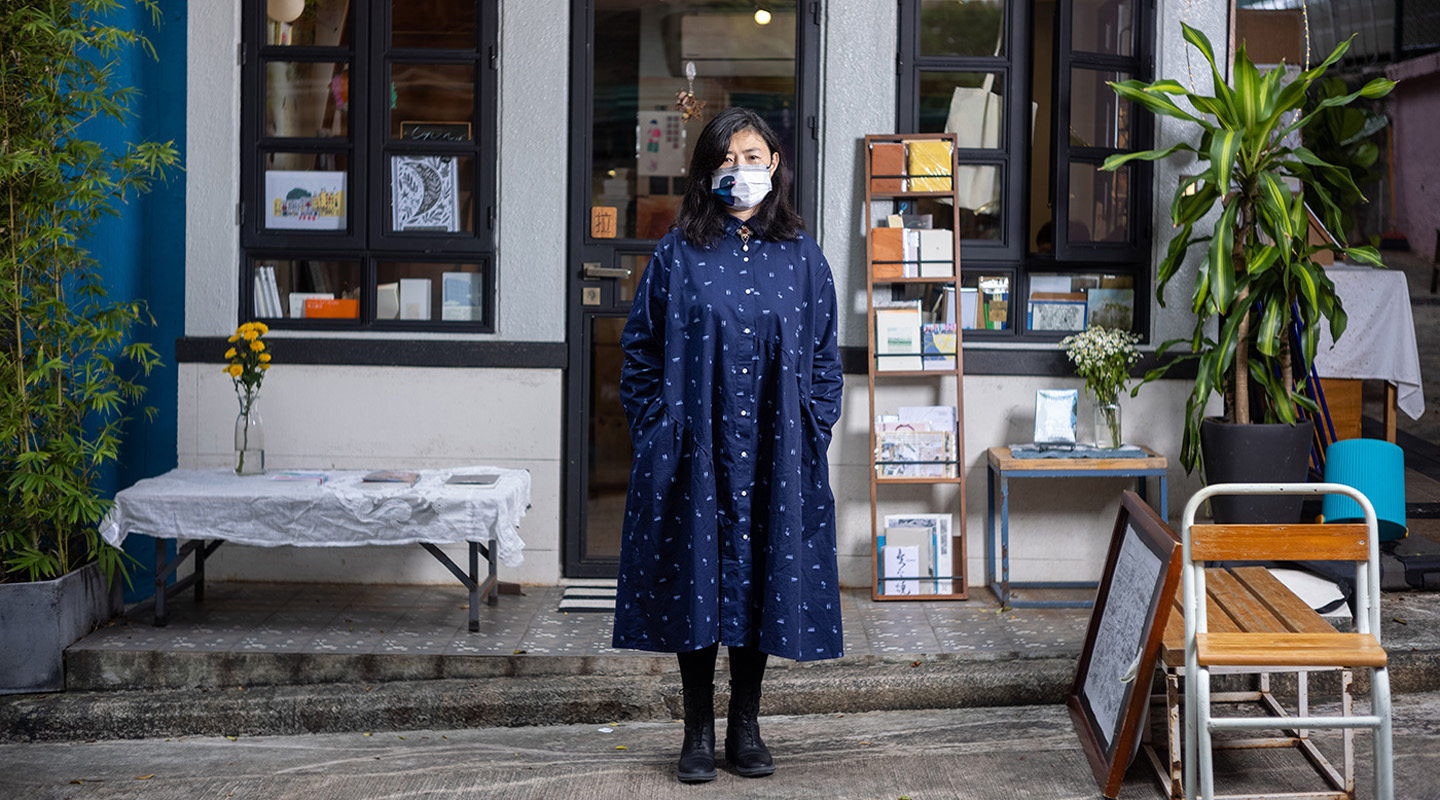
For Leung, tarot is about how to become a better self. ‘Maybe we see ourselves being enslaved to some behavioural patterns. But indeed, such an awareness is a crucial starting point.’ The healer faces human finitude with knowing gentlenss and humility. On the tough side, Leung holds her head up high in the midst of vicissitudes and believes that humans must be solely responsible for their own lives.
‘We cannot change the others. The only one we can change is ourselves, trying to come to see things in a new light. Both cultural studies and tarot are about meaning-making.’
‘Why do you feel so strongly about it?’
‘Because you cannot blame or flee. To say that circumstances or the proverbial destiny have left you in the poor shape you are in is… to put yourself in the place of a victim,’ she searches through the cards, muttering: ‘it doesn’t help, other than continuing the blame game. To be honest, there is no way out.
‘Growing up means given the circumstances, you think about what you can do and act, instead of blaming others or wallowing in self-pity. This is taking responsibility for your own life.’ The Eight of Swords is a classic card that captures the sense of self-victimization: donning an orange gown, a girl is trapped in a matrix of swords and swamps, bound and blindfolded. ‘Swords stand for thought and ideas. She is surrounding herself with limiting thoughts, feeling trapped and miserable. But looked carefully, she is unscathed by the swords; if she walks to the side a bit, she may even use the swords to cut off the bondage and set herself free. In fact, there is a way out, and she can leave any time. It’s only that she chooses to remain in the rut and be paralyzed by fear.’
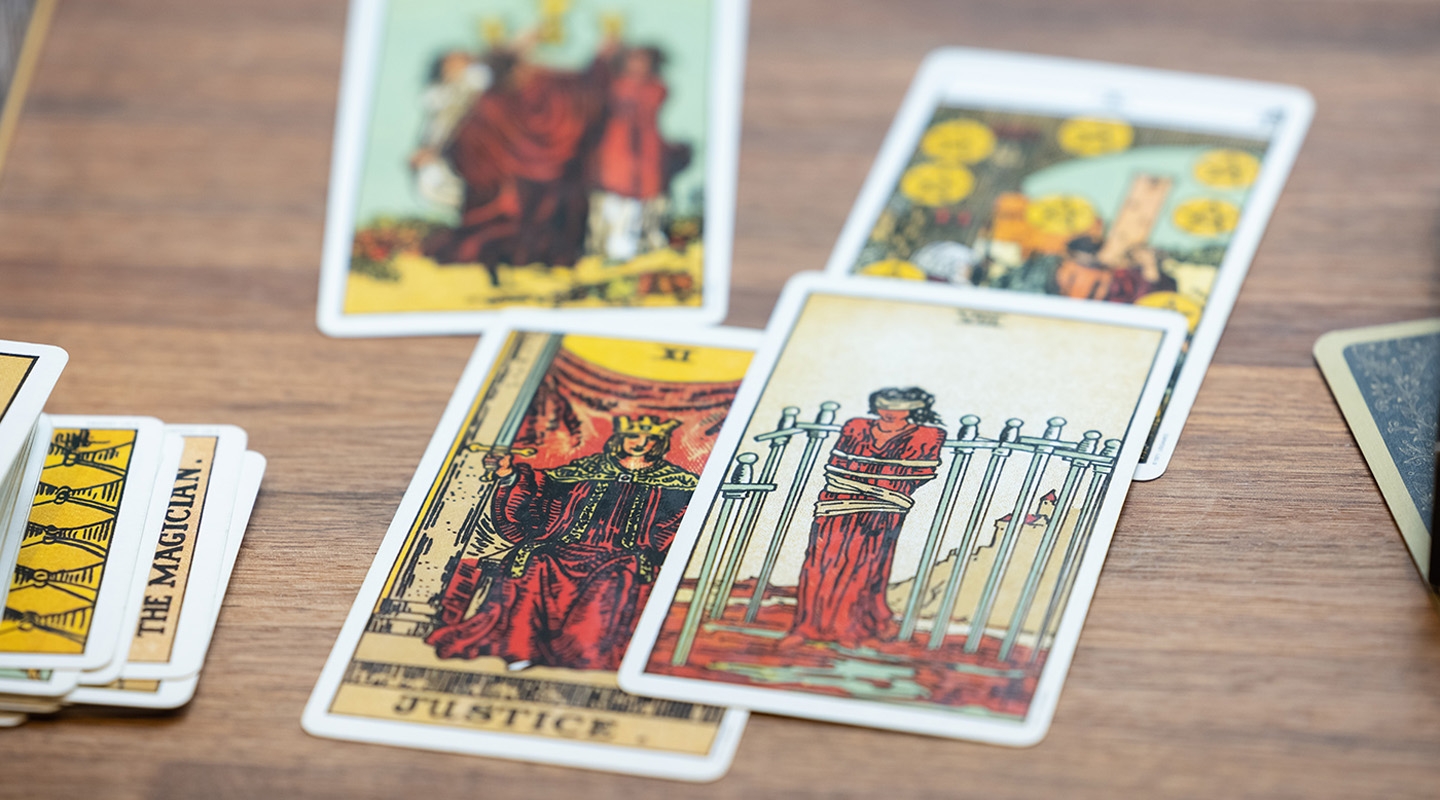
Take charge of your own life; say no to sentimentality. Leung writes in a post on her Instagram ‘RainBean Healing’: ‘Don’t see your life as a tragedy, because you have the power to rewrite your story. Reclaim your power.’
The Star—Reconnect with the Source
In critical moments, a tarot reader conveys the message people need most to hear. For those who cannot consult a reader, how can they remain sane and heal themselves?
‘Spending time with yourself is important,’ she says softly. ‘It can be sparing an afternoon to go to the countryside, looking at trees, sitting on the lawn. Coming up here to read is also nice.
‘Spending time with oneself means we check in with our emotional and physical states so as to understand ourselves. Next we see if we can process those emotions. Sometimes, the storyline of sadness can be simple; it’s just one emotion—’ She says, the lightness of her voice assuaging as if stroking a cat.
‘Release those emotions. Crying is a good way; cry if it helps release them. The problem may not go away, but the pain will ease. Most of the time, the narrative is not so important. What we aim at is tuning our state, which most likely will bring about a change of perceptions.’

After the interview, we invite Leung to take pictures at different corners of the bookshop. Mount Zero at noontime sees readers popping in and out, reading or inquiring about titles quaint and new. Sheets of benign sunlight are slanting down on the neighbouring cha chaan teng, with folks from the neighbourhood, groups of youngsters and suit-clad professionals chatting over their meals on folding tables scattered over the pedestrian alley. Next to a foreigner, a beautiful dog with a fluffy white and brown coat lies snugly on the ground. The low-key tarot reader is obviously unused to the camera. When the moment for farewell comes, she waves her hand through the glass door, with lights in the bookshop and the reflections of trees and buildings from the outside fusing and playing on the panes. Appearing lucid and ambiguous, she is beautiful in a moving way. Going from outside to inside, unnumbered days and years have passed. What she spent half a lifetime looking for, she didn’t miss out. And inside the door, the real resides.
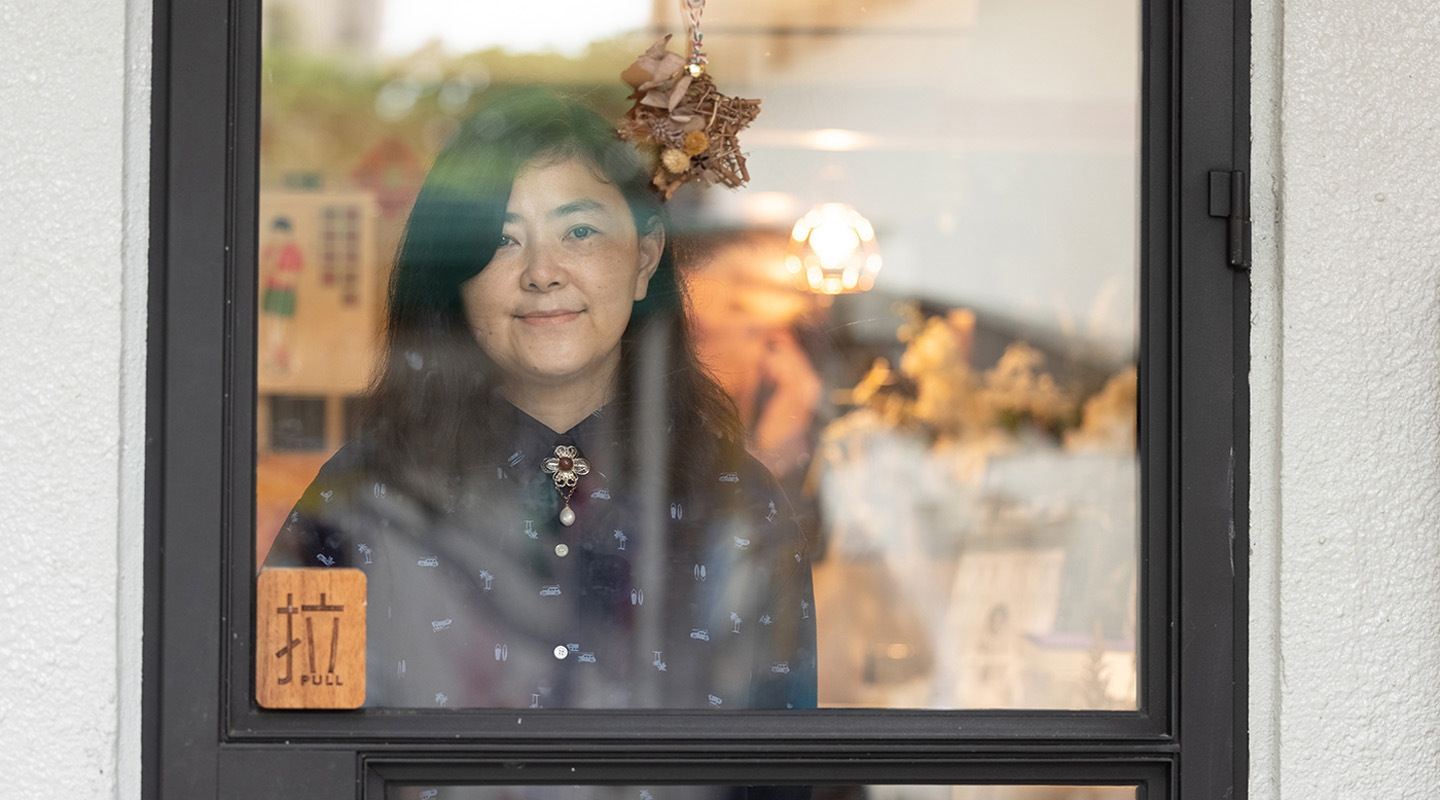
By amyli@cuhkcontents
Photos & video by Keith Hiro
Video editing by gloriang@cuhkimages
Video subtitles by jasonyuen@cuhkcontents
Venue courtesy of Mount Zero Books